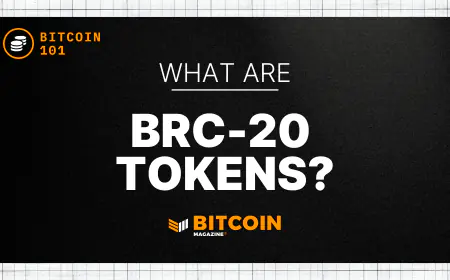How to Develop a Robust and Secure Crypto Wallet
In the dynamic world of cryptocurrency, developing a robust and secure wallet app is a complex yet rewarding endeavor. This article dives into the complex process of cryptocurrency wallet development, guiding you through each critical step from initial strategy formulation to final deployment. What are the core features of a cryptocurrency wallet? A crypto wallet […]

In the dynamic world of cryptocurrency, developing a robust and secure wallet app is a complex yet rewarding endeavor. This article dives into the complex process of cryptocurrency wallet development, guiding you through each critical step from initial strategy formulation to final deployment.
What are the core features of a cryptocurrency wallet?
A crypto wallet should address issues related to the trading and storage of funds on crypto exchanges or marketplaces while enhancing the security of digital assets. The key requirements for such an application include:
Distinct Access Key: Each wallet must offer unique public and private keys to its users. Options for adding a personal password or enabling two-factor authentication are crucial for enhanced security.
Session Time Limits: For safety, the duration of user sessions should be restricted, a common practice in banking apps. If a certain period is inactive, the app should close automatically, requiring the user to re-enter their login credentials to continue.
Support for Multiple Cryptocurrencies: Although single-currency wallets (like Bitcoin or Ethereum wallets) exist, multi-currency wallets are becoming more popular. They offer convenience for investors and traders looking to manage a diverse asset portfolio in one place. Leading crypto wallets continuously integrate new tokens to meet the growing demands of the crypto community.
Buying and Selling Functionality: The wallet app should facilitate the buying and selling of cryptocurrencies, enabling users to place buy and sell orders and conduct trades among themselves.
Transfer Features: Users should be able to send cryptocurrencies to other wallets using public keys. Transferring digital currencies between users is a fundamental function of any cryptocurrency wallet app.
QR Code Integration: QR codes streamline operations such as executing transactions, receiving asset transfers, logging into the app, user authorization, and confirming various actions, enhancing both convenience and security.
Push Notifications: These can include transaction confirmation codes and alerts about successful or failed asset transactions. They play a vital role in security, promptly notifying the user of any unauthorized account activities.
Real-time Conversion Rates: Given the volatile nature of cryptocurrencies, it’s essential for the app to offer real-time conversion rates. The app should sync with blockchain networks to provide current rate information during transactions.
Cross-platform Compatibility: Develop the app for both iOS and Android platforms. Technologies like React Native enable developers to use a single code base to create apps for both operating systems.
Optional but nice-to-have features
In addition to the core functionalities, your cryptocurrency wallet can distinguish itself from competitors by incorporating these optional, yet highly beneficial features:
Fee Estimator: Implementing a tool that calculates or automatically displays transaction fees based on the transaction amount can significantly enhance user convenience and transparency of the system.
Fiat to Crypto Conversion: While not all wallets offer this, the ability to convert fiat currencies like US dollars into cryptocurrencies can make your wallet more attractive, especially to crypto novices.
Crypto Payment Gateways: These gateways enable users to pay with cryptocurrencies for various goods and services. Advanced gateways even offer automatic conversion of crypto assets into fiat currencies, beneficial for both users and merchants.
Integration with Decentralized Exchanges (DEXes): Many wallets require a connection to the web version of a decentralized exchange or NFT marketplace for asset trading. Offering simplified or automatic connections to popular exchanges can significantly enhance your wallet’s functionality.
Multi-Account Management: Cater to investors and traders who manage diverse portfolios by allowing the creation of multiple accounts for different cryptocurrencies. This feature helps in segregating assets for better organization.
Cryptocurrency Staking: Including the option for users to stake their cryptocurrencies, similar to platforms like Binance and Coinbase, can be a significant draw. Staking allows users to support network operations and earn rewards, making it a popular method for passive income among crypto enthusiasts.
Tech stack for crypto wallet development
When embarking on developing a cryptocurrency wallet application, you must decide between creating a desktop, web, or mobile app. Each type of application can leverage specific advanced technologies:
Electron.js for Desktop Applications: Electron.js enables developers to build native, cross-platform desktop apps using JavaScript, HTML, and CSS. This open-source framework, which utilizes Chromium and Node.js, supports compatibility across Mac, Windows, and Linux. Key features of Electron.js include automatic updates, crash reporting, and tools for debugging and profiling.
React.js and Node.js for Web Applications: Both React.js and Node.js are prominent open-source JavaScript libraries for web development. React.js, a front-end library, is renowned for its ability to craft interactive user interfaces, offering regular updates and a range of tools. Node.js, used for back-end development, is known for its efficiency in building scalable, high-performance web applications with great flexibility and interoperability.
React Native for Mobile Applications: For developing mobile apps for both iOS and Android, React Native is an excellent choice. This framework allows for the creation of applications for both platforms using a single code base. It leverages React.js to provide developers with a collection of user interface components for quick compilation and deployment of mobile apps. Additional benefits include the live update functionality and a user-friendly interface.
These technologies are widely recognized by professionals as optimal choices for application development. Many development teams, including those specializing in creating desktop apps with Electron.js, web apps with React.js and Node.js, and mobile apps with React Native, prefer these technologies for their robust capabilities and versatility.
Steps to Cryptocurrency Wallet Development
Embarking on the cryptocurrency wallet app development journey, we find a meticulous process that unfolds in several stages. From the initial idea to the final launch, here’s a detailed roadmap to guide the development process.
Strategy Phase
The beginning of the cryptocurrency wallet development process is about defining the strategy. This phase is crucial for evolving an idea into a successful application with excellent functionality. In this stage, developers will:
- Determine who the app’s users are.
- Conduct thorough research on the competition.
- Set clear goals and objectives for the app.
- Decide on the mobile platform(s) the app will be developed for.
Regarding the financial aspect, building a cryptocurrency wallet app can vary in cost. On average, the development might range from $50,000 to $150,000 and could take about four to six months to complete.
Product Mapping
Once the wallet’s requirements are clear, the next step is to prepare a product map. This phase is about:
- Prioritizing the requirements of the cryptocurrency wallet.
- Arranging these requirements into structured delivery milestones.
This planning stage also involves identifying the necessary skills for the app development initiative. For instance, if the goal is to build an app for both iOS and Android platforms, the development team should include specialists proficient in both operating systems.
UI/UX Design
The success of any wallet greatly depends on how well users adopt and benefit from its features. It is important to create intuitive user experiences so that users stay engaged with the wallet. This stage may involve creating information architecture and workflow diagrams to map every potential interaction users might have with the wallet.
For mobile-based wallets, developing wireframes is a vital step in giving a visual structure to the app’s functional requirements. These wireframes also help Bitcoin wallet developers more accurately estimate the development costs, taking into account the complexities involved.
A style guide is also crucial to ensure the app maintains a consistent look and feel, covering aspects like font family, color scheme, and branding. After developing the style guide, the next step is creating mockups by applying this guide to the app wireframes. As the design of the cryptocurrency wallet finalizes, expect further modifications in its information architecture, workflow, and overall aesthetics. Eventually, a prototype might be requested for early-stage testing of the wallet’s design and functionality.
Wallet Development
Before the actual development of the cryptocurrency wallet begins, it’s essential to:
- Define the technical architecture and understand the app’s complexity.
- Select an appropriate technology stack for the development platform.
- Establish clear development milestones.
A typical Cryptocurrency Wallet Development project consists of two main parts: development platform, and the mechanism for transactions. Popular blockchain platforms that facilitate the development process include Quorum, Hyperledger, and BigChainDB.
Selecting the right platform is crucial for the project’s growth. In terms of transaction mechanisms, developers can choose from various options, such as Proof of Work, Delegated Proof of Stake, Proof of Elapsed, Federated, and Proof of Stake.
Testing Phase
Ensuring comprehensive QA (quality assurance) testing of the cryptocurrency wallet is paramount. This involves conducting a variety of tests:
- User experience testing to ensure the interface is intuitive and user-friendly.
- Functional testing to verify all features work as intended.
- Performance testing to ensure the app runs smoothly under various conditions.
- Security testing to safeguard against potential vulnerabilities.
- Device and platform testing to confirm compatibility across different hardware and software environments.
Deployment and Support
Finally, deploying a native mobile app involves submitting it to the respective app stores.
After submission, you will need a developer account to launch your wallet. It’s important to note that iOS apps undergo a review process that can take anywhere from a few days to several weeks for approval.
In contrast, Android apps typically do not require a review process and can be available in the Play Store within a few hours after submission.
Post-launch, it is crucial to monitor the app’s usage actively. This includes tracking KPIs to measure the app’s success, frequently checking crash reports, and addressing issues reported by users.
Conclusion
Developing a cryptocurrency wallet app is a multifaceted journey that demands meticulous planning, careful design, and rigorous testing. By following the outlined steps – from strategizing and product mapping to design, development, testing, and deployment – developers can create a secure and user-friendly wallet. This guide serves as a comprehensive roadmap, ensuring that your venture into the world of cryptocurrency wallet development is well-informed and successful.
What's Your Reaction?







































































































